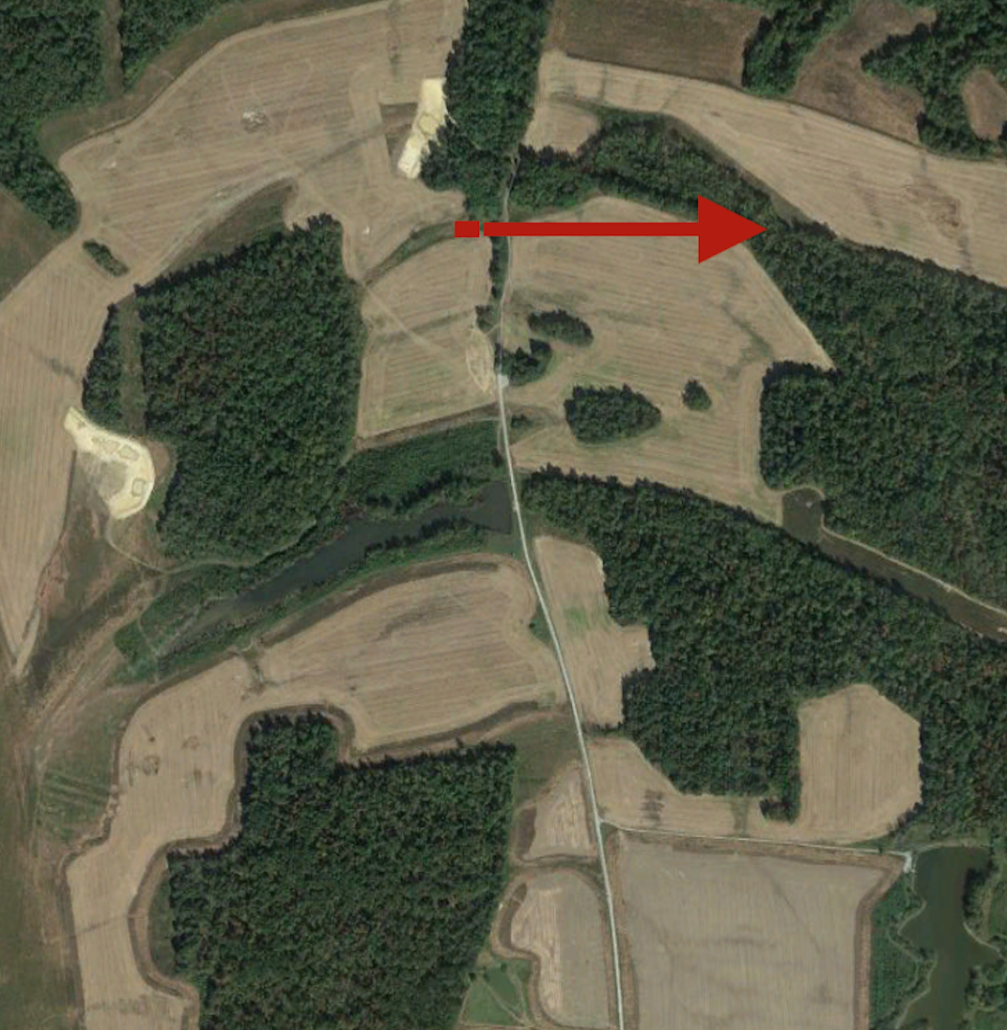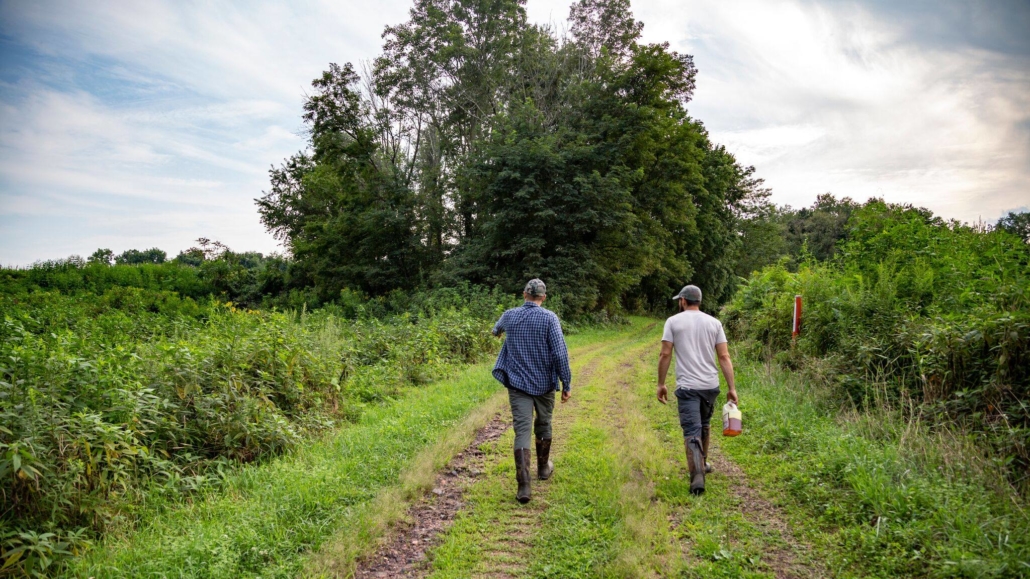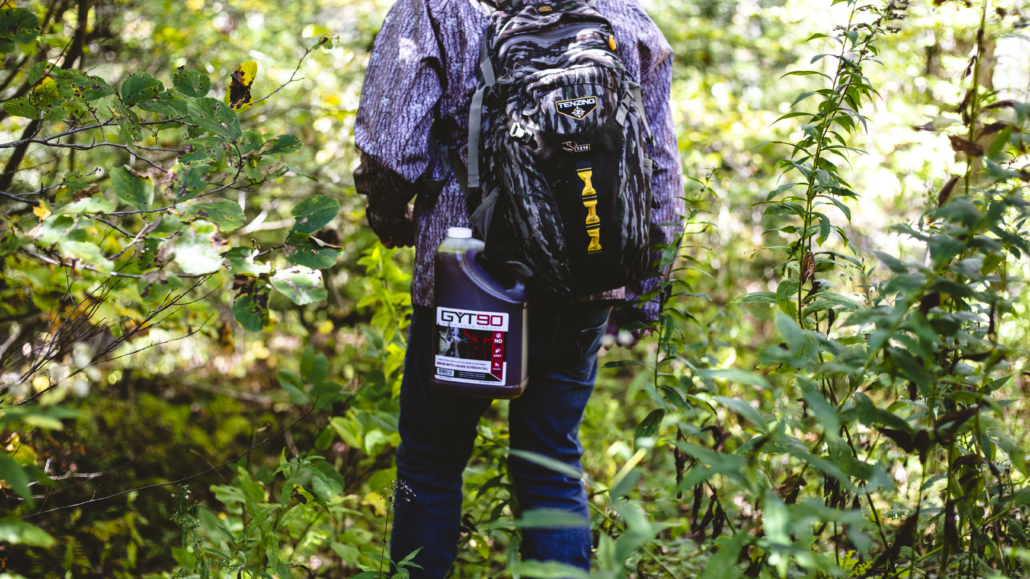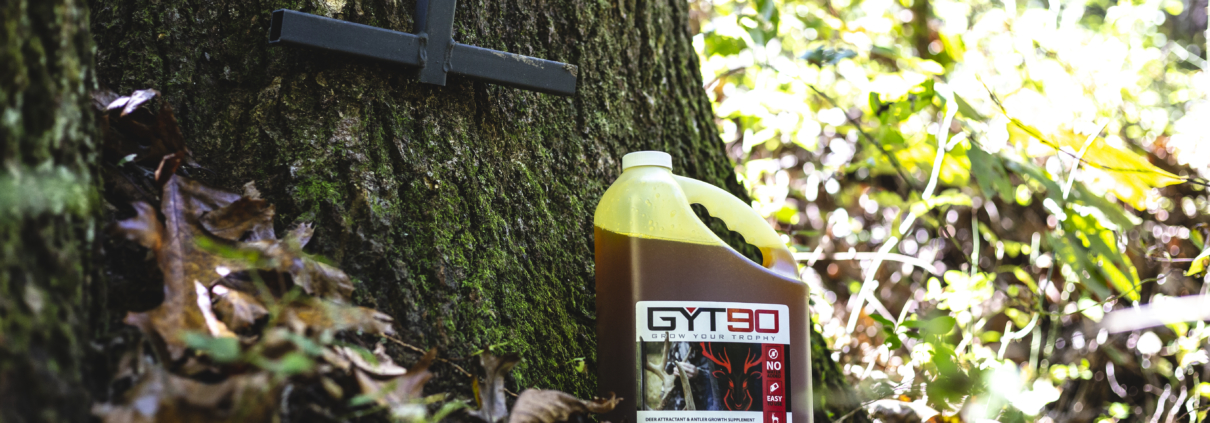Best Locations for Mineral and Bait Sites For Hunting
Mineral and Bait Site Locations | GYT90 Deer Attractant
Deer hunters want to create an attractive bait site for a multitude of reasons, but most would agree that killing a target buck would be at the top of the list. If you want to build a habitat that encourages deer to hang around your stand during shooting hours; getting creative with your setup will be key. To begin this process, we must consider the priorities of a whitetail:
- Food
- Water
- Security
- Breeding
These four factors will control a deer’s life and the better we understand each, the closer we can come to punching our tag. To best determine where a bait site should be located, it’s helpful to refer to an aerial photo and begin your search for the perfect spot. An aerial photograph, in combination with a topographic map, can assist your search for water, food, possible bedding and terrain features that lead to travel corridors.
The primary goal in finding all of these features is to help increase the attractiveness of your bait site and eventually a place in which to ambush your deer.

Natural Deer Movement
Deer, like humans, will naturally take the path of least resistance when traveling in most situations. When setting up your bait site, consider where deer will most likely funnel through an area. The best way to do this is to refer to your map mentioned above. When reviewing the map, you’ll see an arrow that points to a natural point in which the hardwoods is sandwiched in between food plots—creating a pinch point. This area of cover is the perfect place for deer to travel with the feeling of security while moving from one food source to another.
Pinch points are the easiest of features to find on a map, but other features to look for are also important:
Saddles: This is a place where the terrain dips down like a horse’s saddles. Sometimes this feature is easy to spot, and at times it’s very subtle. However, one thing is for certain; saddles are a place deer will naturally move through.
Field Corners: Many hunters prefer to hunt over a field to see much deer, but they don’t realize they’d kill more deer by staying on the inside corner of the field. By the time October rolls around, deer know they are hunted. The likelihood that a mature buck will move into an area before dark decreases and these deer love to skirt the edge of fields by going around the corner; this can be another great place to place your GYT90 mineral station so the deer can feel secure before heading into your food plot.
Gaps in a fence: Every year it’s a good idea to walk the edge of your property line to determine if there are new low spots in the fence. Again, deer love to take the path of least resistance and an easy to cross fence is an excellent place for deer to funnel through. Many times that is on their way to and from food and bedding.

Bedding Areas
Everything we think of—when it comes to whitetails—should be around bedding. Deer spend a large portion of their day bedded-down to survive. Deer will pick a bedding area where they can see and smell in a way that makes them feel comfortable about their situation. At times, we feel the need to push the limits on a bucks bedding area to kill him, but your bait site should not intrude on their bedroom.
To keep the bait site fresh, you’ll have to spend time going in and out of the area. When choosing your location, it’s best to understand where the deer are bedded because they will see you, or smell you going in and out. It’s recommended to find their primary bedding locations as soon as the season is over so that you will not alert the deer during the season.
Once you’ve located their bedding areas, you’ll want to make sure that your bait site is in their natural travel corridor, so you don’t have to push the limits. The most important asset to a deer is water, so getting your bait site between water and bed is a great location to start.
Waterholes
Water is an essential ingredient to a whitetail’s habitat, without water on your property the deer will be traveling as far as it takes to find it. If water doesn’t exist, you have the perfect opportunity to supplement your deer herd with a waterhole. Think about it; the more comfortable you create for the deer herd, the less likely they are to leave their secure environment.
Creating water holes is labor intensive, but worth the sweat equity. All you need is a water trough, or even kids swimming pool, a shovel, and tons of water! Once you have your water is in the ground, and situated close to your bait station, you’re good to go. All you’ll need is rain to keep it full or tote in more throughout the year.
Mock Scrapes
Deer have to eat, they have to drink, but they’re also social animals. Creating a mock community scrape near your bait station can be a great way to keep deer cruising through the area to keep tabs on one another. The scrape is a way for a deer to let others know he or she has visited; think of this as a message board for whitetails!
To create a scrape is simple: Find a tree with a small branch hanging down to where a deer can lick it, rake the leaves back in a large bowl under the branch, then you can pour deer urine or use your own to create the first scent. If you want to run multiple trail camera’s near your bait station, this is the best place to hang your second camera to get pictures.

Putting it Together
Throwing out GYT90 in a random place will produce results, but the likelihood of it producing deer on a consistent basis is lower. The more time you put into creating complimentary aspects of a deer’s life, the more you increase the attractiveness of your bait site. Most of the ingredients to a suitable location already exist on your property, make sure you increase the odds by putting in the extra effort, and you will increase the herd health, density, and your hunting success rates.





Leave a Reply
Want to join the discussion?Feel free to contribute!